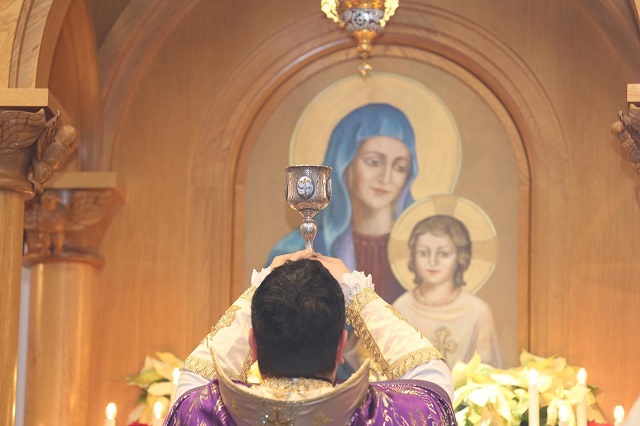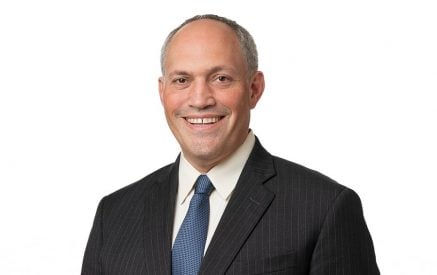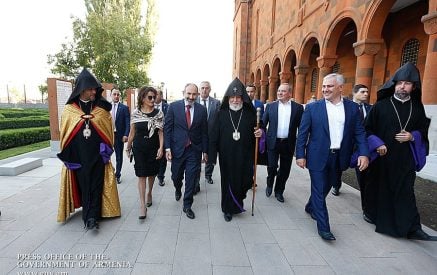It has been nearly a year since our world suddenly came to a near halt. It is mind boggling to recall the ups and down, twists and turns and the sheer underestimation of how quickly the term “normal” was redefined. We have seamlessly incorporated new terms in our vocabulary such as “social distancing” and “herd immunity.” It has dominated every aspect of our lives that we may struggle to understand the missed holidays, the electoral chaos and the tragic Artsakh War. These international and personal events came and went, yet still we are still enduring the anxiety and debilitation of the global pandemic. From the perspective of the Armenian community, our lives have become “virtual.” Badarak has become a Facebook or Zoom event. Our clergy and lay leaders have valiantly carried on with limited in-person events, devastated budgets and the loss of seeing close friends.
Billions of dollars were invested to find a vaccine. The death toll has mounted, and the economic disruption continues. We were promised a vaccine by the end of 2020. Many doubted the possibility given vaccine development history, but with the brilliant innovation of our medical research community partnering with their respective governments, funding and collaboration delivered a solution without compromising the goal of a safe and effective vaccine. The gift of not just one, but two vaccines was approved in December, and light slowly began to shine again. Ever present was our pride as Armenians that one of the vaccine companies was founded and led by a son of the Armenian nation: Nubar Afeyan. It has been a difficult year, to say the least, as we continue to mourn the more than 500,000 lives lost in America and five times that number worldwide. The toll in this country is greater than the number of American lives lost in WWII.
It is said that catastrophes, such as this pandemic, reveal the best and worst of a society. We have been inspired by the thousands of examples of heroic and selfless first responders and the sacrifices of the majority of the population. Our will was never broken. As expected, we have also seen undisciplined and selfish behavior with protocols that have caused preventable surges in the infection rate. It hurts, but the collective good in our society will always outweigh the bad. Armenia suffered from a lack of protocol compliance early and was further impacted by the 44-day war as infection rates spiked on several occasions. With focus and discipline, the situation has improved in the new year to a few hundred new cases per day. They also expect vaccine delivery to be available starting in March. We pray that travel to Armenia will soon return to reignite tourism and the resulting economic impact. There are so many projects and programs that have been frozen that it will be a relief as the “thaw” begins. It will take several months, but it can now be called a recovery.
Read also
Turning our attention to our local American Armenian communities, the “reopening” will begin slowly as we vaccinate more of the population and move closer to herd immunity. Our focus should be on two major items: the return of our communities from virtual to in-person and incorporating new lessons from the past year into our communal life. Clearly our communities have suffered during this time. The inability to have unconstrained communal worship and socialization has had significant behavioral impact. We have thankfully had video platforms and limited participation, but the fear factor and policies have kept most people understandably away. We should applaud our church for their efforts during this unprecedented time by responding to the needs of the faithful with live stream badaraks and proactive protocol programs. Nevertheless thousands of faithful in our churches have been unable to receive the Holy Eucharist, creating a spiritual void.
The social aspects of our communities have been devastated. Many have difficulty remembering when they last saw longtime colleagues and enjoyed the richness of in-person activities. These omissions have been the lifeblood of our diaspora and disappeared in a moment. It is my belief and hope that the lack of “supply” has created a significant anticipated “demand.” Our people, young and old, have missed what our communities offer. Even the things we took for granted, like weekly services or social events, are longed for in their absence. Armenians are nostalgic people. We remember our past and respect our traditions. Even in a period of one year, we can list so many activities that we want back in our lives, perhaps even some we had not realized. Our institutions and organizations, through which our community activities are held, should all be planning the “reopen” process. Of course, we can’t predict the future, but most believe the fall period is when public activity will return. It is important to start planning now, because it requires careful attention, and the process itself can be therapeutic. We have no clear understanding of the damage and “rust” level. Our churches have been empty for a year. Our organizations have ceased public in-person activity, and our people have been estranged from each other. The recovery will be more complex than simply turning the lights on again. Will people return? Will there be a latent fear factor? How will we manage the economics of re-entry as accumulated expenses require immediate revenue support?
This is the time for all of us to plan and communicate. I am certain that groups like the National Association of Armenian Studies and Research (NAASR) and Watertown’s Armenian Museum of America, for example, will plan a careful re-engagement as their core mission is of a public nature. Churches will have a spiritual revival to manage, as well as critical education and cultural and social agendas. Cultural organizations can bring the joy of music, art and dance back into our communities. Each of us individually and communally can ask the question, “What can I (we) do to re-open our communities?” Soon (optimistic) travel to Armenia will be common again, and a full engagement of the diaspora and Armenia can be realized. So many critical areas have been constrained in the last year while Armenia has been devastated by economic and humanitarian challenges.
As we re-engage in planning, it would be worth our time to integrate what we have learned in the last year to benefit our communities. We have been afforded important learning opportunities during times of adversity. It can be easily overlooked, especially as we begin to lift the dark shroud of COVID-19. Consider for a moment the changes we have made in how we communicate, how we educate, how we raise funds and how we attend to our basic needs. Prior to the pandemic, video and live stream platforms were available but had limited acceptance. Very few people had ever heard of Zoom. In one week we shut down the economy and our educational/social practices. The innovative instincts of people quickly made adjustments. Families began to Zoom with each other, and in many cases it turned out they spent more time with each other than pre-COVID. Many became closer as they realized what they had been missing.
An organization like NAASR has a very active programming itinerary to bring Armenian studies into the community. Prior to the pandemic, the programming was primarily in person either in the Boston area, California or other areas of the east coast. Some live streaming was available, as well as video replay (website/YouTube). With the pandemic, adjustments were made to continue programming with virtual technology. What they discovered was that scholars and other content contributors were more available because they could contribute from their homes. Audiences grew significantly with online participants. One no longer had to live in a particular locale to participate. Global audiences tune in from Europe, the Middle East, Armenia and Asia, in addition to a geographically diverse North American group. Hundreds are participating where in-person events would average about 100 attendees. Probably the most important aspect is that based on data collected, the quality of the programming did not suffer. The technology has advanced to where images are clear, interaction is easy and questions can be asked. Perhaps most telling has been the quality of the internet for global connections. NAASR continued with a virtual Annual Assembly of members this past fall. This process, enabling the participation of membership without regard to geography, was pioneered by the Armenian International Women’s Association (AIWA) and has proven to be secure for financial documents and electoral processes. Most church assemblies are held in January and February, thus locking out “snowbirds” and other vacationing members of the community who are active members of the church. The church recently held a virtual diocesan assembly. They should bring this process to their parishes and expand participation. There is conclusive data that the secure software platforms exist that can supplement in-person meetings with virtual participation.
This is a clear opportunity that should not be abandoned when in-person activities restart, but rather should be expanded. Creative fundraising through social media platforms should continue as they provide a method to reach new audiences. We have also seen activity continue into the summer months with virtual communication processes. When people can access programming from the comfort of their home, it opens up new audiences that otherwise would be unavailable. Perhaps the most important of these new learnings is the compatibility of connecting with our new generation. They don’t use flyers and email as much as Instagram, Twitter and Facebook. Decisions to participate in events have short windows that can best be accommodated by social media platforms. Training the older community members to new ways during this pandemic will help bridge communication gaps with our emerging leaders. We must retain what adds value from our experiences over the last year. I would encourage that this become a conscious effort as “reopening” planning commences. Let’s get to work; that light in the tunnel is the manifestation of our hope.























































